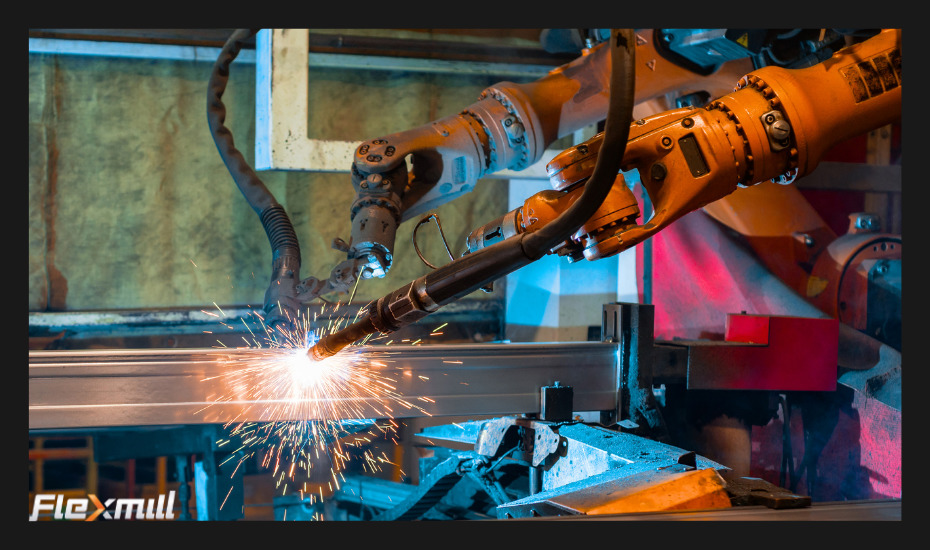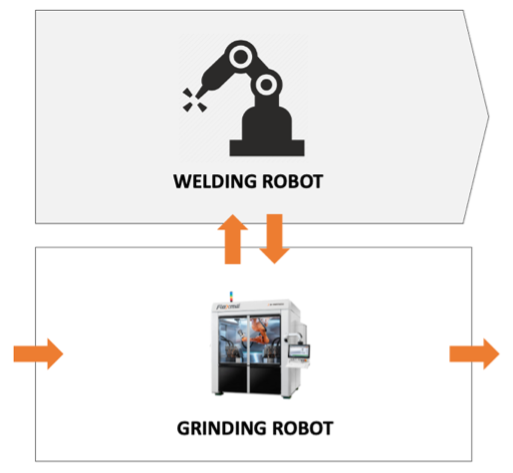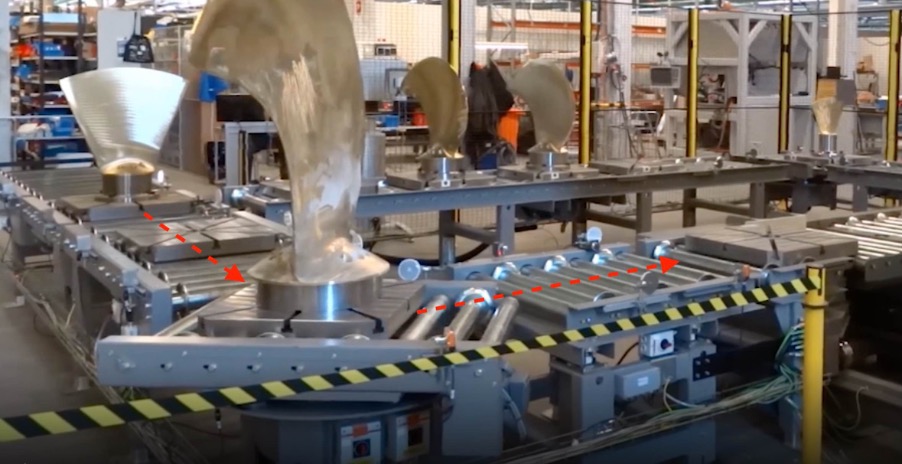
A considerable number of manufacturers and professional workshops have automated and robotized welding. Yet, they are struggling with quality issues, low throughput, and unpredictable process flow. Tuning up the welding robot doesn’t help because the bottlenecks have moved to the weld preparation and finishing stages.
This article introduces the most effective solution for increasing welding process throughput – the weld grinding robot!
Welding is one of the most automated and robotized steps in the modern industrial metal fabrication process. It is easy to understand why so many industries use welding robots – they deliver consistent, high-quality results fast. Robots reduce waste and increase safety. Robot arms integrated with external axes can reach nearly inaccessible locations and perform complicated weld lines with perfect quality. Programmed welding robots minimize human errors and inconsistencies compared to manual work. With suitable offline software, welding robots can be quickly reprogrammed to handle workpieces of diverse types and forms.
A production process is only as efficient as its weakest link – this definition applies to welding, too. Most manufacturers and workshops have honed their welding robots to perfection – fast speed, high-quality, optimal yield. However, optimizing one stage of a process moves the bottlenecks to the upstream and downstream processes. Introducing a welding robot means that weld grinding – performed in the surface preparation before welding and surface finishing after welding – becomes your new bottleneck.
In fact, welding itself is only a minor part of the entire process. Preparing workpieces before welding, and finishing them up after welding are much more time-consuming, expensive, and resources-intense stages in the end-to-end process.

Although manual grinding is common in weld preparation and finishing, it comes with many disadvantages. Manual weld grinding requires a high level of skill and experience to achieve an acceptable quality and consistency. Working with dangerous angle grinders is heavy and slow – gouging and undercutting are common problems when workers must process several workpieces quickly every day. Manually ground welds require additional quality checks.
As a result, manual grinding slows down your welding process, decreasing productivity, profitability, and quality. You cannot predict production output accurately, and health risks increase sick leaves.
Manual grinding could be the weakest link of your welding process!
How to increase welding process throughput? Welding itself can mostly be an automated, and robotized process. You cannot gain much by tuning up your welding robot if the implementation has been done by experts.
The most effective way is to robotize grinding in the weld preparation and weld finishing stages! They consume much time and resources, while manual work reduces quality, predictability, and throughput significantly.
Robotic weld grinding is a faster and more cost-efficient alternative to manual grinding. A grinding robot works fast, at a constant speed. You can program it quickly for different welding projects. The most advanced griding robots can automatically change the disc or the belt to maximize unmanned operation time. The robot produces an identical and uniform weld seam for all workpieces.

The weld grinding robot consists of a few primary components – these include typically a cabinet, robot arm, high-precision rotary servo table, force control, and compliance unit, and a spindle motor kit or a belt grinder kit. With these, you can equip the robot to operate different grinding tools such as discs, belts, and stones for processing surfaces and weld seams.
An electrical spindle motor with an active force compliance unit mounted on the robot arm ensures that the robot moves the tool accurately according to the workpiece surface and applies a uniform pressure throughout the run. This maximizes the quality and consistency across all welds.
You can manage and monitor the weld grinding robot via a control user interface. A tool time manager tracks tool use and triggers switching at the end of a tool’s lifecycle.

The grinding robot is just one component of an automated weld grinding process. By automating the material flow around the grinding and welding robots, you can increase the efficiency even more. Automated lifting and conveyor systems relieve the staff from moving and fixing heavy workpieces.
A sophisticated, customizable clamping system allows fastening workpieces of all form-factors at every possible position on standard cradles. The cradles automatically move along a conveyor track, feeding new workpieces into an inbound buffer to wait for their turn to be processed. After completed, the conveyor system moves the workpiece out of the cell into an outbound buffer.
Do you want to gain a competitive advantage in welding? Many manufacturers and professional workshops have already automated and robotized welding. You cannot differentiate with a welding robot any longer. Now you must remove the bottlenecks before and after the robot – and robotize weld grinding!
Contact Flexmill for the most advanced grinding robots with a patented, fully automatic tool-change!
Are you considering a surface finishing robot investment? Download our ROI calculator for a best-practice example.